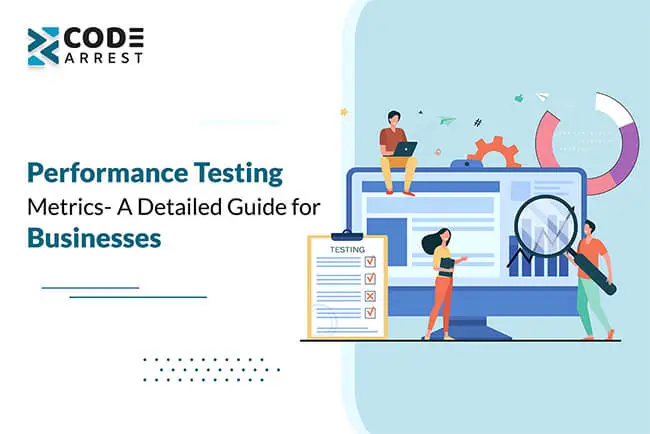Best Tools to Avoid Plagiarism in 2022
Blogs Best Tools to Avoid Plagiarism in 2022 Blogging has become a common phenomenon in the past few years. This field got its place when it was around the pandemic year. So many bloggers have raised their voices that they are giving their every ounce, yet they are not progressing. Are you among such bloggers struggling to make their blogs rise and shine on Google? If yes, then we are going to show you the pitfall between you and your blog’s success. In this article, you’ll learn about that pitfall known as “Plagiarism” and how to cope with that issue? What is Plagiarism? The problem is commonly faced by many beginners & experienced bloggers sometimes. If you are a writer or blogger, you must have copied other work without giving them credit. When jotting down something, it might be possible for you not to understand any topic or information. Being in a confused state, you have copied the piece of information from some source. No matter whether you are doing it intentionally or undeliberately. Plagiarism will affect your progress in blogging. Several people believe that plagiarism can only occur in fields related to writing. It is a false notion. However, you may also get to see replications in areas related to music, videos, and others. The main aim of this blog is to let you know how plagiarism in your work can affect your blog or content? We will also provide information about tools that can help you eliminate plagiarism and remove it for better outcomes. Effects of Plagiarism on Content If any plagiarism has been detected in your work or you are caught copying others’ work without giving them credit, you will be punished by visitors, Google and other search engines. The “punishment” term mentioned above doesn’t mean it will harm you physically. But it will indeed affect your blog and maybe your platform’s credibility. You won’t be able to make smooth progress in your blogging career if you follow plagiarized work. That’s why we have gathered information about the worst effect that plagiarism can have on your blogging career. You should look at these impacts to know why you should avoid plagiarism? Copyright strike When you are copying someone’s work without giving them credit or getting permission from them, they have the right to take action against your work. For example, a professional web creator of the original owner of the work you copied can take a strike against your work with the help of DMCA. Getting these strikes from the original creator is common, but it is undoubtedly not suitable for your blog, web page and especially your career. Your blog will never be able to make smooth progress in such conditions. And, if you keep getting strikes regularly, Google might delete your blog or the whole website. This way, all your work assets will be useless because of plagiarism. Because of all such harmful effects, you should avoid repletion of someone’s work. Indeed, this won’t be easy because hundreds of blogs are present on the same topics. Therefore, we have searched for some apps to help you address this problem. To make it easy to understand, we have also issued brief information about these topics. Best Tools to Avoid Plagiarism in 2022 from Blog or Content As we have already mentioned, writing 100% unique content is impossible. You must also check the information about the topic from other websites. Then, it will become easy for you to write. Once you have collected the main points and information about the case, it will help you create unique content. To do so, we have found some best websites and apps to help you in this worst-case scenario. 1. Check-plagiarism.com As a blogger, you won’t find it challenging to use this website as it has a straightforward interface. However, you can use this website if you want deep information about the uniqueness of your content. The incredible feature of this app is its work in multiple languages. It supports more than seven languages. Also, this tool is programmed to compare your work with all the other blogs and articles. Furthermore, it can also check grammar issues on the same page. 2. Plagiarismcheckertool.com This tool won’t ask you for any subscription or purchase. You can use it for free for as long as possible. The only thing you have to do is insert your work in the box, and this will start to detect any plagiarism. Although sometimes, an error can be caused in this tool. So, this is why we are providing you with more than one tool so that you can use any of the tools given in this blog. 3. Editpad.org This tool can help you rewrite any sentence in your language. It provides you with perfect grammar synced with a tight grip on vocabulary. You can paste the duplicated sentence in the box, and this tool will start rewriting the punishment; hence, it will provide you with plagiarism-free content. 4. Essaytoolbox.com It is a paid rewriting tool. Essaytoolbox will help you maintain the uniqueness of your content. Although, you’ll find its subscription very expensive. You can also use one of the three websites above if you’re searching for a free rewriting tool. Conclusion:So, we have provided you with information about the Best Tools to Avoid plagiarism in 2022. Of course, it will help you heaps to write plagiarism-free content. But, simultaneously, it will help you build a successful career in the blogging field. With these apps, you can eliminate plagiarism and write your original content.
Best Tools to Avoid Plagiarism in 2022 Read More »





